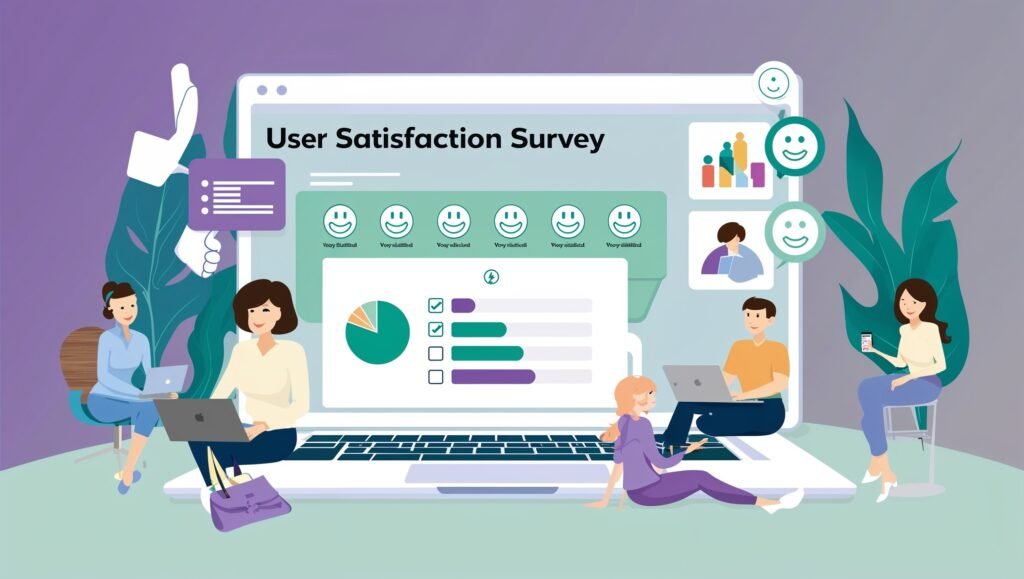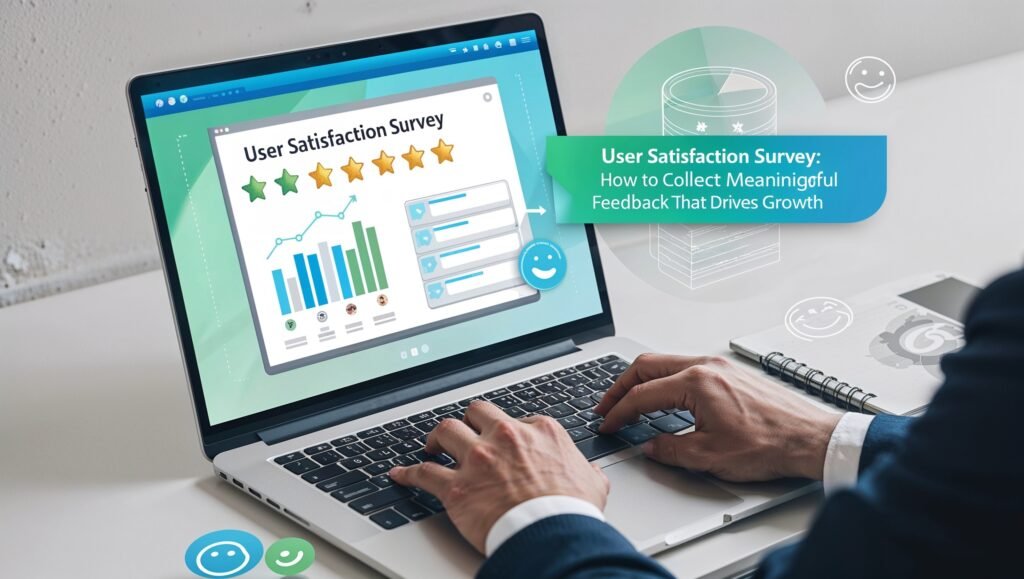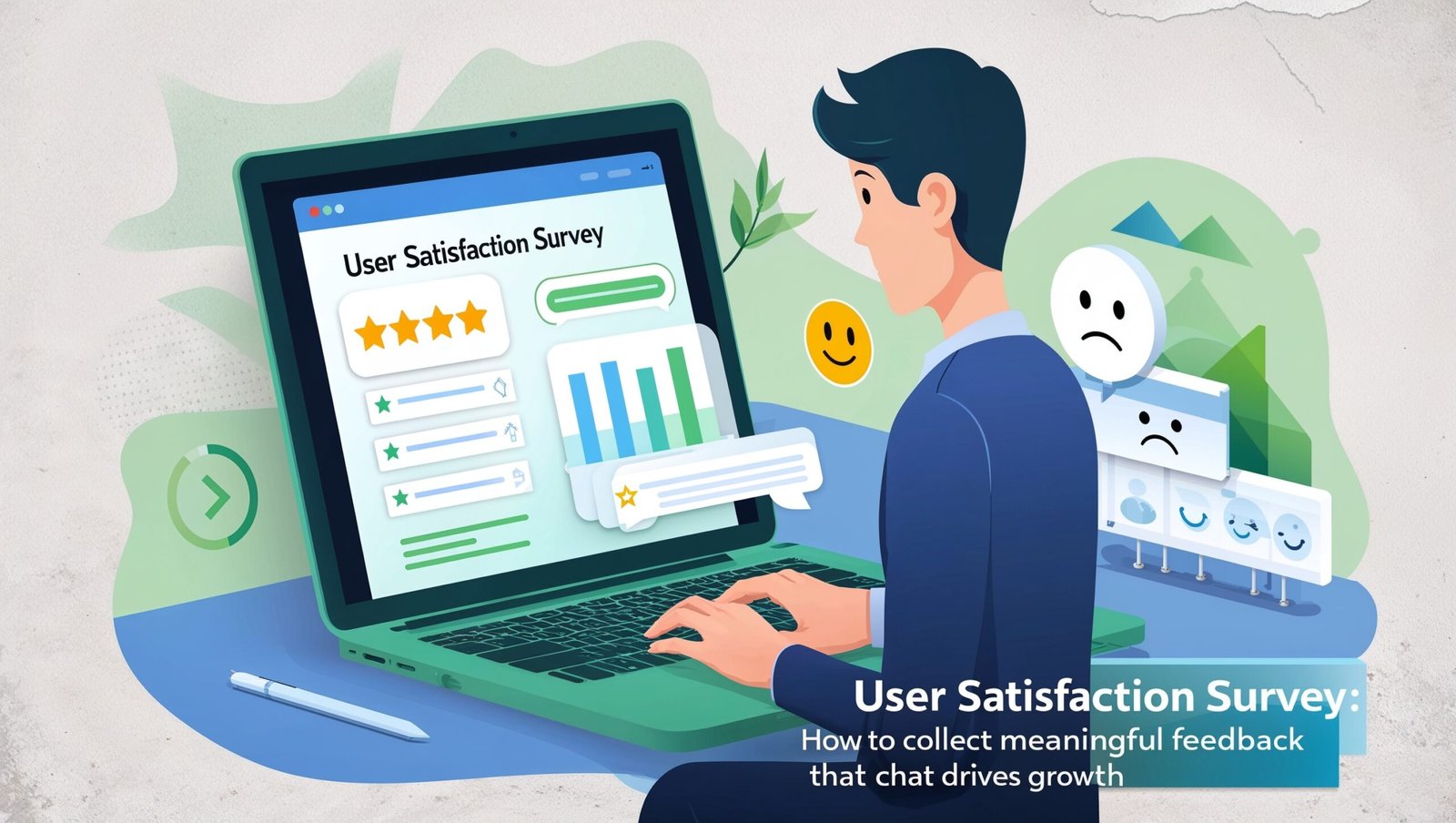Why User Satisfaction Surveys Matter in 2025
In today’s fast-paced digital economy, customer expectations are evolving rapidly. A user satisfaction survey is more than a checkbox—it’s a strategic tool to understand your customers, improve offerings, and build long-term relationships.
Surveys provide critical insights into user needs, friction points, and opportunities for innovation. When used correctly, they become powerful drivers for retention and revenue growth.
Best Practices for Conducting User Satisfaction Surveys

1. Define Clear Objectives
What are you trying to learn? Whether it’s overall satisfaction, product usability, or service efficiency, define your goals before you build the survey. This makes the process focused and results actionable.
2. Keep the Survey Short and Focused
Users are busy. A long or confusing survey may result in lower completion rates. Keep your survey under 5 minutes and ask only relevant questions that align with your goals.
3. Use a Mix of Question Types
Balance quantitative (e.g., rating scales, yes/no) and qualitative (open-ended) questions. This gives you measurable data with personal insights.
4. Choose the Right Timing
Send surveys immediately after a product purchase, service interaction, or milestone to collect relevant and accurate feedback while the experience is fresh in the user’s mind.
5. Assure Anonymity and Data Privacy
Let respondents know their answers are anonymous. This builds trust and improves the quality of responses.
Top Tools for User Satisfaction Surveys

To collect and manage feedback efficiently, choose the right survey tools. Here are a few recommended platforms:
- Google Forms: Simple, free, and effective for basic user surveys.
- Typeform: Offers sleek, interactive forms that enhance user engagement.
- SurveyMonkey: Great for in-depth analytics and enterprise-level survey projects.
- PollHit’s Survey Tool: Built to help businesses create interactive, branded surveys that resonate with modern users.
Use PollHit’s Create Poll page to start building engaging satisfaction surveys tailored to your business needs.
Analyzing the Results to Drive Business Growth

1. Identify Patterns and Trends
Use graphs and analytics tools to identify common feedback themes. Focus on high-impact areas first.
2. Share Feedback Across Departments
Involve your marketing, product, and support teams in reviewing survey responses. Collaboration helps prioritize improvements that matter to users.
3. Act on Feedback and Close the Loop
Make changes based on insights and let users know you’ve listened. For example, “Thanks to your feedback, we’ve improved our checkout process!”
Boost Engagement Using PollHit

With PollHit, you’re not just creating surveys—you’re building a communication channel. Here’s how PollHit can help you get more responses:
- Custom-branded surveys
- Intuitive drag-and-drop builder
- Built-in analytics dashboard
- Easy distribution via links or embeds
Explore our most popular surveys to get inspired!
Conclusion
User satisfaction surveys are essential for identifying friction points, improving experiences, and building loyalty. With tools like PollHit, you can easily create surveys that offer real business insights.
Ready to collect meaningful feedback? Start now with PollHit’s survey builder and unlock the full potential of user satisfaction.
